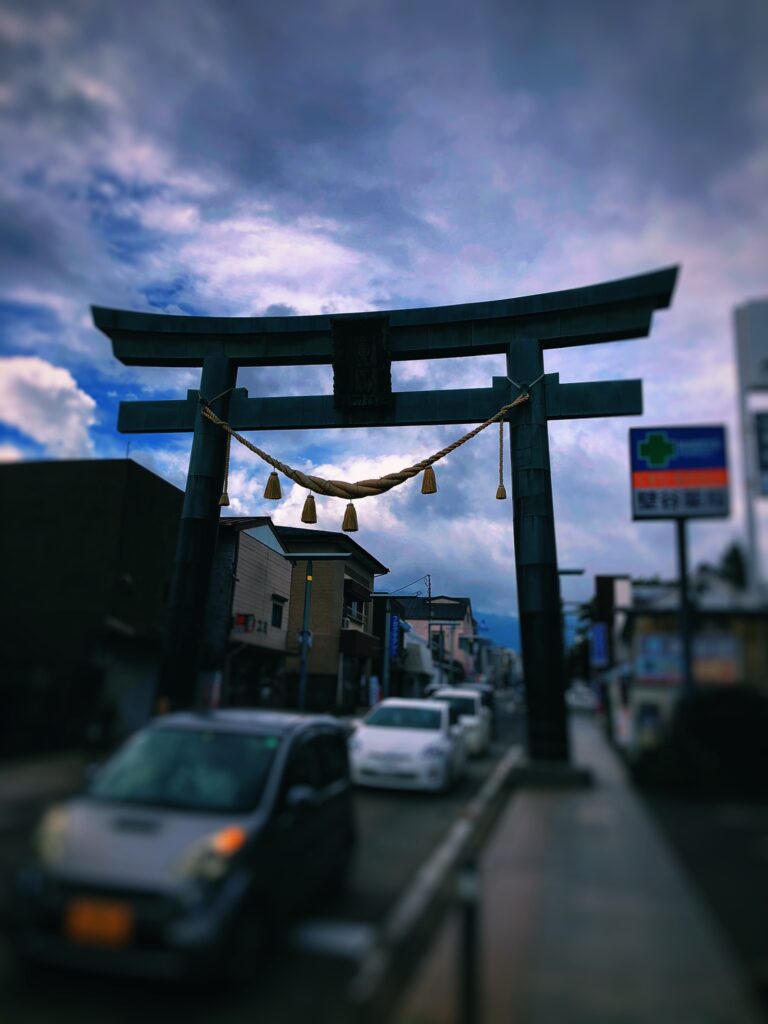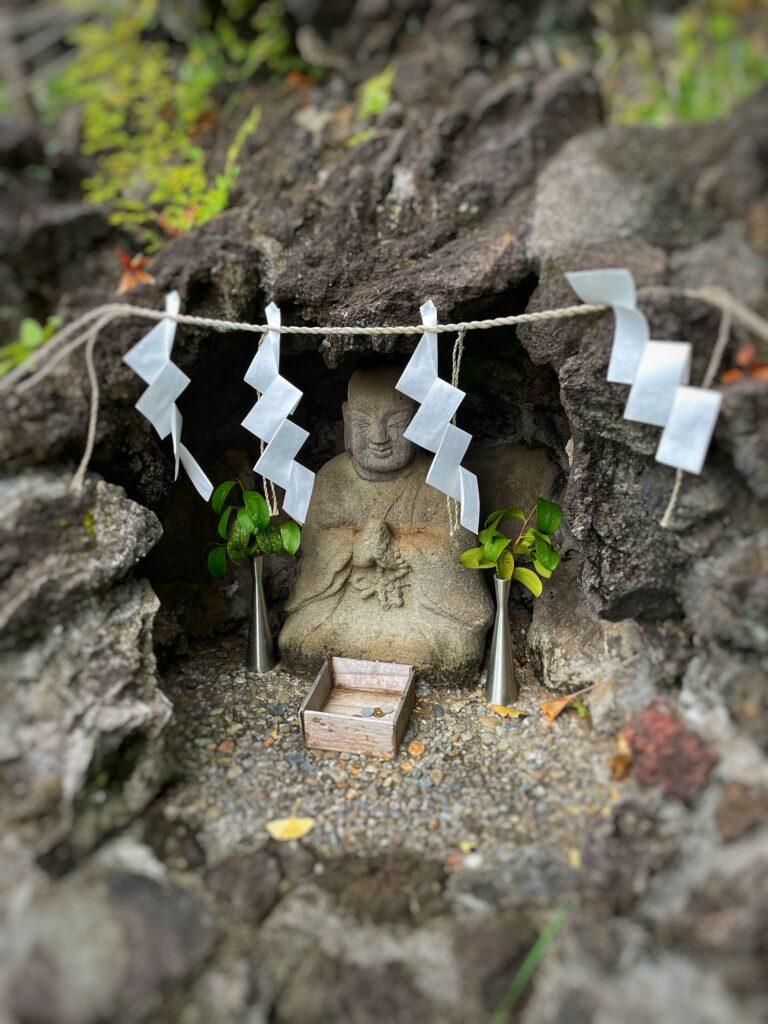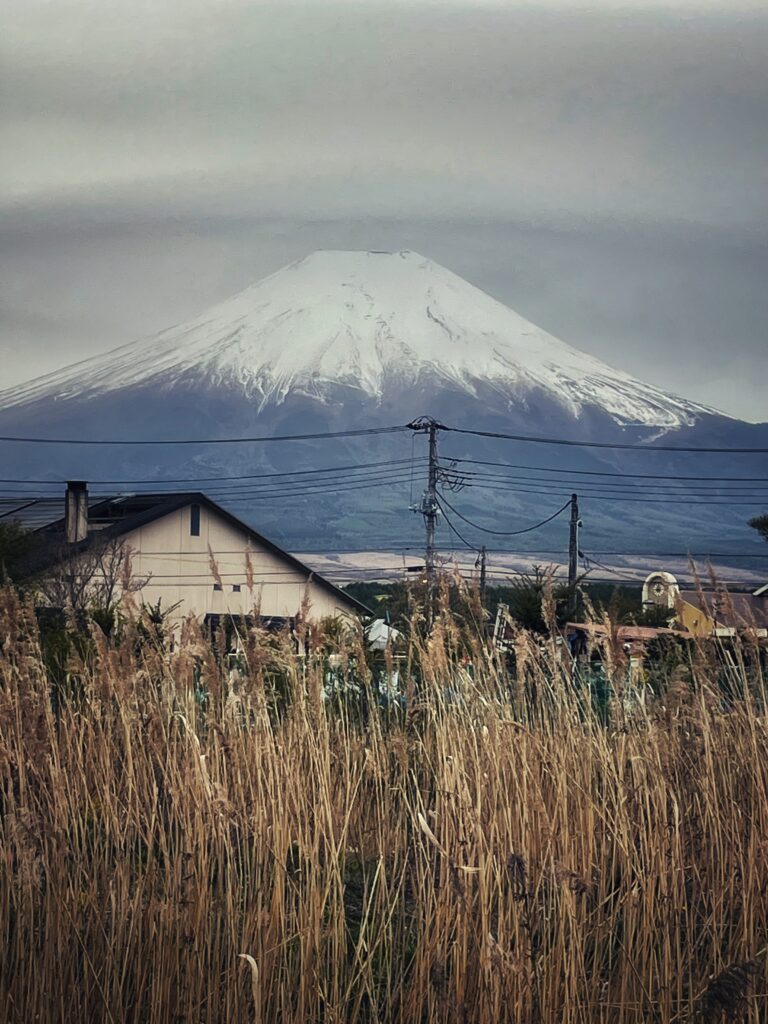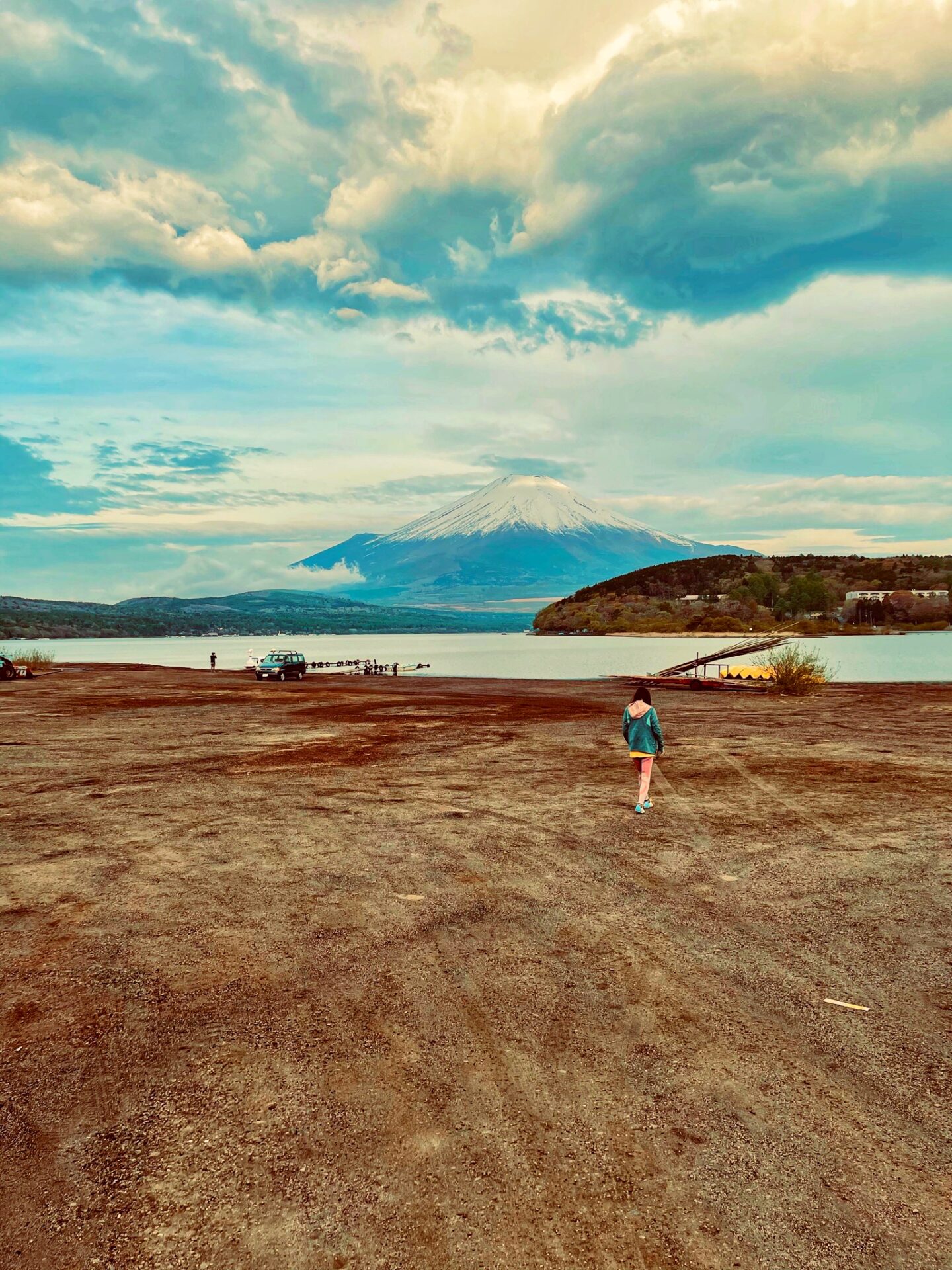Mt. Fuji pilgrims
The Hitoana cave on Mt. Fuji’s western skirts doesn’t look like much from outside — its mouth is small. Apparently, it’s not particularly deep either, stretching back only some 90 meters, narrowing as it goes and getting more and more cramped. One probably wouldn’t make anything of it at all was it not for what surrounds it — a stone balustrade, 36 stone steps, and a mass of gravestones gathered reverentially at its approach like an assembled congregation (the graves of pilgrimage leaders).
But something quite extraordinary happened here in the final years of the 16th century. A wandering ascetic now known by his religious name Kakugyou entered its darkness, and, with only bats and rats for company, stood meditating on a wooden platform on tip-toe. In doing so, he believed he was encountering, indeed becoming one with, the divine force at the center of the world. The idea he gave birth to — Mt. Fuji as the cosmic mountain — would quickly spread.

To understand the idea, it’s worth panning out from the cave to the Japan that Kakugyo was born into. The Heian Period was long gone. Central order had collapsed and warlords’ armies were roaming the country in a competition for dominance.
It was this chaos that vexed Kakugyo, according to Earhart, and set him on his religious mission. He had been roaming the country, too, all the way from his birthplace at the other end of Japan near Nagasaki, but as an ascetic, seeking to find in the realm of the spirit a way to heal and restore harmony to a society battered by extreme violence. One day, he had a vision telling him to go to Mt. Fuji.
It is tempting to read significance into the fact that Nagasaki and its environs were where Christianity, first brought to Japan in Kakugyo’s lifetime by Jesuit missionaries, got its biggest foothold before the religion was proscribed by degrees and then completely suppressed by the Tokugawa shoguns in the first half of the 17th century.
There’s no mention in Earhart’s book of Kakugyo having dealings with Christians, but I couldn’t help wondering whether there was any connection between the turn Kakugyo gave to the Mt. Fuji deity, which he saw as “the source of the Sun and Moon, of the Pure Lands, and of the human body,” and the monotheism of the new imported Western faith, as if the idea had lodged itself in his subconscious and when the time came, germinated into the strange and wondrous flower of Fuji faith.
An altogether different reason might have been at work, too, in making him effectively turn the traditional syncretic formula of Shugendo on its head — might the cure to civil discord be found in a powerful national symbol? Mt. Fuji as the center of the world could be that — in fact, over time, its proto-nationalist implications would begin to come to the fore.
But whatever was or was not at work beneath the surface of Kakugyo’s mind, the communion he felt he had undergone with the Fuji deity fitted squarely within Japan’s religious traditions, in which interpenetration with a Buddhist deity — sometimes understood as an aspect of Buddha consciousness — can be a part of esoteric Buddhism.
And while it can be hard to understand how Kakugyo is said to have experienced it all so intensely physically — the esoteric mandala he later composed are called minuki, whose two characters suggest he had “extracted” them from his body — he clearly believed that he had directly experienced with the very fiber of his being the order of the cosmos.
The Fuji deity, Sengen Daniichi, tells Kakugyo that the chaos around him is due to a lack of harmony between heaven and earth. But it can be restored — not just through Kakugyo’s ascetic practices but also through pilgrimages to the mountain.
In other words, if only people at large could recognize the true cosmic order, it could inspire a return to order in society. From now on, then, people would need to come to the mountain. And by that, Kakugyo meant people from all classes. The mountain would link them in harmony. And they, though more from the lower than upper classes, began coming. The age of pilgrimages to Mt. Fuji had started.
Restoring virtue to a wicked world
On the fujizuka mound in my old neighborhood, there is a miniature shrine at the bottom and top, and several other features representing the major sites of interest to pilgrims who appeared on Mt. Fuji.
Back on the mountain itself, however, we were going to miss most of them, since they were mainly on the top half of the mountain. What we did pass instead were the ruins of a handful of minor shrines and temples not marked on the mounds as well as the bare foundations of what were once teahouses, meaning that the eerie feeling we’d had in the vast forest never quite left us.
But even if we had climbed to the top, part of a mass of hikers following one after the other in the predawn hours, a stream of lights looking from a distance like a little lava flow, we might well have walked unknowingly right past the next turn in the development of Fuji faith — one that appears prominently some two-thirds of the way up every Fuji mound. On the fujizuka, it’s a statue of a meditating figure in a little recess. On Mt. Fuji, though, it’s now just a mass of stones.

Jikigyo Miroku, again to use his religious name, was a son of Edo, the city built from scratch by Tokugawa Ieyasu, the warlord who outlived as much as outfought all his major rivals to bring the Warring States period to a close and found a dynasty of shoguns. Whereas Kakugyo was appalled at the violence of that era, Jikigyo, a hundred years or so into Tokugawa rule, appears to have been reacting to what he saw as the misrule around him, with peasant uprisings, as well as urban unrest, starting to increase around his time.
A disciple of Kakugyo’s teachings and a keen pilgrim to the mountain, his solution was similar — at the least to the extent that the solution lay with Mt. Fuji. But for himself personally, his solution was also more radical.
Taking a portable shrine to near the top of the summit (the summit itself was off-limits to what he intended, he was told by the Sengen shrine organization, which to this day controls the top of the mountain) he fasted to death inside it to usher in a new and better age. (A follower then heaped stones on the spot).
Specifically, by achieving through his death a “perfect union” with the Fuji deity — understood now by those who followed Kakaugyo’s teachings as the cosmic deity — he would usher in the age of Miroku, or the promised future Buddha, who would appear to revive the teachings of the original Shakyamuni Buddha in an age that had grown deaf to them. In short, Jikigyo intended to restore virtue to a wicked world.
As such, his message had a more explicitly ethical focus than Kakugyo’s, preaching the importance of hard work and frugality to the mostly non-samurai members who thronged the city’s burgeoning number of pilgrimage associations. But Earhart’s book suggests his teachings also contained within them a seed of radical egalitarianism.
It wasn’t as obvious as a call to class warfare, or even to defy the rigid classification of people into four classes in Tokugawa Japan, fixed by birth and hedged around by strict rules on what was and was not socially possible — either would have invited severe repression.
Instead, it undermined the system in the realm of the spirit, for Jikigyou taught that the virtuous world of the Age of Miroku would be the creation of people acting virtuously at all levels of society.
In other words, there was a standard to judge the upper classes beyond whatever measure the upper classes might apply to themselves, no doubt generously; and, given the state of the world, the implicit judgment was that the upper classes were in fact not acting virtuously.

Jikigyo’s teaching, which also endorsed the notion that anyone could be reborn in any class, even as a member of the imperial family, suggested that at a deep level, everyone, from the emperor and shogun down to the poorest laborer, were in fact equal, even if society made them put on different masks and perform different roles in the play.
His teachings thus appear to have articulated in a coded, indirect way a longing for a more equal, and hence fairer, society that could not be stated directly.
Fuji faith was not to be used to make money, either, in a prohibition that Kakugyo had first introduced — and one that was striking given that many members were shopowners. In fact, Earhart says, there was a marked anticlericalism in the movement, with professional religionists in the nation’s shrines and temples viewed as more interested in money than righteousness.
And even more striking, at least to the modern eye, is that the movement rejected the way Japanese religion at the time generally viewed women as impure or unfit to enter ritual spaces (a tendency that has by no means wholly vanished). Seen in another way, this was yet another expression of the movement’s egalitarianism.
The Tokugawa authorities were never at ease with the Mt. Fuji pilgrimage confraternities — after all, they were largely composed of the common people and when samurai did join them it was bound to undermine the strict class stratification that Tokugawa Japan rested upon — and moved to ban them several times.
But the authorities never did so with enough resolve to actually eradicate them either, partly, no doubt, because the religion never explicitly challenged the regime, and partly, too, because for many members, pilgrimages to Mt. Fuji were as much about pleasure as salvation, being almost an early form of tourism. And besides, Fuji the mountain had in fact united all classes in Edo already, at least in one respect — it was a part of how the city was composed for all of them.
Continued…
